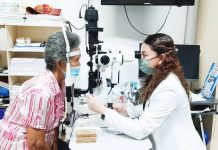ILOILO City – Consumers in Western Visayas saw welcome relief in April as the region’s headline inflation rate eased to 1.9 percent, driven largely by declining food and transport costs, the Philippine Statistics Authority (PSA) Region 6 reported.
The latest figure reflects a significant drop from the 2.7 percent inflation rate in March and is less than half the 4.1 percent rate recorded in April 2024.
PSA officials said this downward trend signals a broad deceleration in price increases across essential goods and services, especially benefiting low-income households.
“This is a positive development. Food and transport are staples in every household budget, and any reduction here directly improves affordability,” said PSA Region 6 Statistical Specialist II Miguel Gallego.
Gallego attributed the largest impact to the food and non-alcoholic beverages group, which posted only a 0.9 percent increase in April — sharply down from 2.5 percent in March.
The standout contributor: rice. Once a major driver of food inflation, rice posted a deflation rate of -5.3 percent in April, a marked reversal from 0.1 percent in the previous month.
Transport costs also fell deeper into deflation at -2.1 percent, compared to -1.1 percent in March.
Declines were further observed in housing, water, electricity, gas, and other fuels (down to 3.7 percent from 4.1 percent), as well as in restaurant and accommodation services (2.8 percent from 3.4 percent).
Vegetables, meat, fruits, and sugar also contributed to the slowdown. Notably, vegetable inflation dipped to 4.1 percent from 6.3 percent, while meat prices eased slightly to 4.0 percent from 4.2 percent.
For households in the bottom 30 percent income bracket — a key focus group for inflation monitoring — the impact was even more pronounced, with inflation slowing to 1.3 percent in April from 2.8 percent in March.
Among the provinces, Antique and Aklan recorded deflation at -1.6 percent and -1.2 percent, respectively. In contrast, Iloilo and Iloilo City posted the highest provincial inflation rates at 3.2 percent.
Still, Gallego warned that some sectors remain vulnerable to future increases, particularly alcoholic beverages and tobacco (5.9 percent), clothing and footwear (3.8 percent), and health (2.7 percent).
The PSA emphasized its continued monitoring of inflation trends to help guide economic policy and consumer protection efforts./PN





